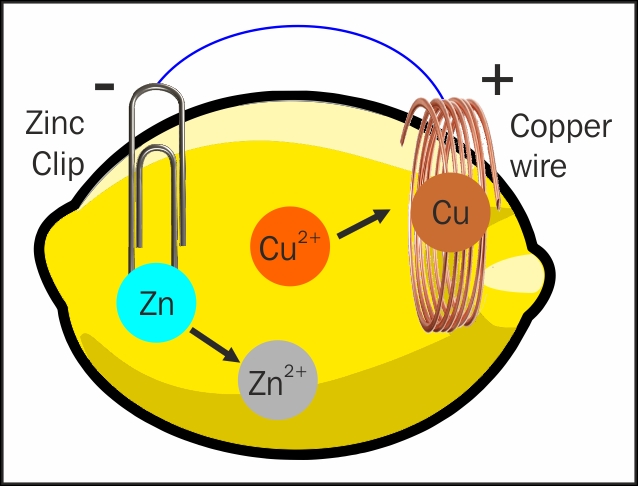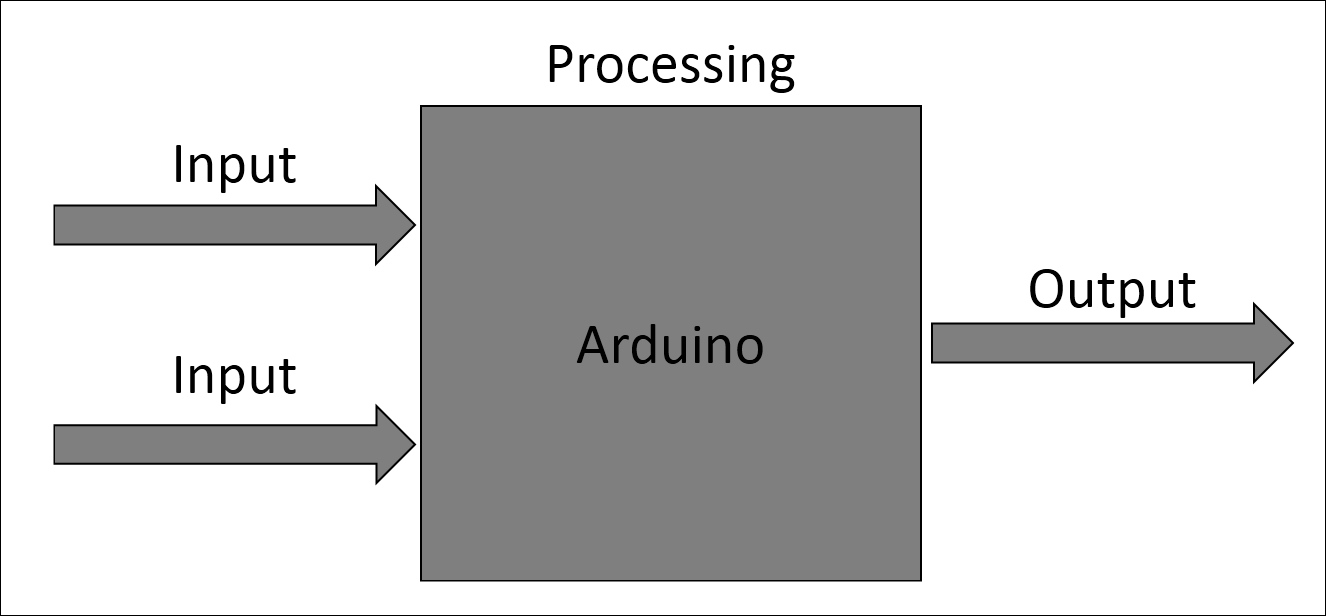Things you will learn about in this chapter are as follows:
How things around you work
How to ask questions when you are learning something new
How to carefully record your observations
Have you ever wondered how things around you seem to talk to each other? How does your garage door know when to open? How does your night-lamp know when to switch the light on and off? How does your computer connect to the Internet and download interesting videos?

All the problems in the world are solved by one word-invention.
The word In-ven-tion originates from the Latin word Inventio, which means finding out. Human beings are called intelligent as they are able to understand, communicate, and change their surroundings. People who make these changes are called inventors.
Since prehistoric times, inventors have held a great power over the rest of humanity. Imagine a world without fire! Humans would not have been able to defend themselves or cook food. Imagine a life without wheels, where humans had to carry heavy weight on their backs. Every inventor has had some positive contribution to the society. It is cool to be an inventor. Inventors are no less than superheroes.
However, becoming an inventor is not an easy task, but so wasn't humans visiting the moon! Every human has the ability to be curious, ask questions, understand, learn, team-up, and build a solution. All it takes is taking one step at a time, just like climbing a set of stairs. Always imagine your solution at the top of a flight of stairs, break down your problem into small questions, connect those questions to your existing knowledge base, learn more from your available resources-be it friends, books, elders or internet. Expand your knowledge in related fields, figure out your solution. Try to build your solution, if it works, there you go, you have an invention! If not, think harder, question more!
And you young makers are invention-superheroes! Isn't it cool?
The first step to gaining these superpowers is to keep an observation-notebook. This observation notebook will be your companion throughout your journey towards a desired solution.
Now that you have your own invention-notebook, write a question. What fascinates you in your everyday life? There is an answer for everything it is a matter of asking the right question.
A good invention-notebook is filled in regularly, and superheroes don't not give up till they have solved the problem!
The internet is a great tool to solve problems-let's call it the helpful genie in the bottle. During the course of building things with me, you will need to rub this bottle a lot and call the genie!
Brace yourselves, young invention-superheroes, you and your genie are ready to embark upon this wonderful world of inventing solutions to problems!
Now that we agreed that you want to solve problems, how do we define or recognize a problem?
A problem is nothing but a solution with a LOT of gift wraps. It is an opportunity for you to increase your knowledge base. The more data you have in your knowledge base, the harder problems you can solve, and the better your solutions can be.
Problems can be observed by you, or reported to you by others. Understanding the problem is the first step. Some good questions to ask would be as follows:
What is the end result I want?
Does any solution currently exist to solve it? (Search the internet, use your genie!)
Is the current solution the best way it can be solved?
When you get the answer to the last two questions as NO, you try to break down the problem into small blocks, just like you chew the food before swallowing.
Take a very simple example: if your younger brother has a problem understanding how your night lamp turns on and off with a switch, you start by making a note in your inventor's notebook:
What do you see in the lamp?
You see a bulb at the center, a shade, and a tail-like wire plugged into a socket; you write it down.
Then you see the small switch, which makes the bulb go on and off Note that down too in your notebook. Start asking yourself what is in that switch that makes this lamp go on and off and how can it be related to the socket? Ask an elder to pull the plug off-try the switch.
Does the bulb go on and off? No? Note that down in your inventor's notebook.
Ask the elder to plug in the wire again. Try the switch now? Yes! Make a note of that in your notebook too.
What did you learn? The lamp works when it is plugged in, and it is controlled by a switch.
What makes the lamp work? What comes out of the socket? Can you explain it?
Ask your genie! (Answer on the last page)
Can you recall your last birthday party? How old did you turn? What color clothes were you wearing? How many friends came to your birthday party? What were they all wearing? Of course you can recall all that by looking into your photo-album!
What were you thinking when you opened your best friend's present? Could that thought be captured in camera? No! Do you want to base your future interactions with your best friend based on how special they made you feel on that day? Yes!
Human thoughts and memories are short-lived; they change with time and new experiences. As we discussed, solving a problem takes a lot of time because each question leads to more! It is tough to keep a tab on all the thoughts.
But if you write it down, it's yours forever, as it was in that moment! As clear as a photograph! Clarity of your last thought is very important when you are trying to invent something new as you are linking the information you already knew to newer information. It is a chain that keeps on increasing with experience.
Hence, your inventors-notebook is your best friend!
Let's conduct a simple experiment to test your newly acquired inventor-power! Adult supervision is needed. The requirements are: a lemon, a paper clip, and a copper wire.

Procedure:
Request the adult to straighten the paper clip and cut about two inches of it and give you. Request the elder to remove the insulation from the household copper wire and cut two inches of it.
IN FRONT OF THE ADULT, try touching both the wires with your tongue (I know, it's not my favorite snack either!).
Now fix the two wires in the lemon in a way that they are as close as possible but DO NOT touch each other.
Now try licking the end of the wires.
Observation: Taste something tingly on your tongue?
Conclusion: Congratulations! You just 'tasted' electricity! Go brag to your friends!
Note
If you add one more lemon with similar paper clips and connect them, you can power an LED! Cool, eh?
Warning Cool as it may seem, electricity is a highly dangerous power, and you must ALWAYS have adult supervision while handling it. DO NOT ATTEMPT TO TASTE ANY ELECTRICITY THAT IS NOT COMING FROM the LEMON. This tingling sensation is magnified by several thousand times in real life, and all our appliances are built to withstand that kind of power; our human body is not, and imitating this stunt can be disastrous!
What kind of questions have you noted in your inventors-notebook? Why is this happening? What will happen if you replace the copper wire with the same kind of paper clip instead? Write back to me at <mail@priyakuber.in>.
Have you ever wondered how your body functions? Irrespective of your wonder, start making notes! Let me get you started with some basic questions.
Q1. If we were an advanced robot, how do we see?
Ans. Through the eyes (Duh!).
Q2. How do we hear?
Ans. Ears. (Don't chocolates and new toys sound great?)
Q3. How do we differentiate between touching a soft kitten from touching a stone?
Ans. Skin. (I know you prefer a soft kitten more than a stone, trust me, so do I!)
Our nose, ears, skin are all what we call sensors. (Remember, we are all advanced robots!)
And what happens when we touch something hot by mistake? We quickly withdraw our hands. Now a normal kid would not notice this, but you, as an invention-hero, would ask the right question-why does this happen?
Our skin, which is a sensor, senses the hot object and wants to protect itself from damage; it sends a signal to our brain through electrical pulses and returns with instructions on what to do-MOVE AWAY!
Our brain is a microcontroller. A microcontroller is what makes our bodies intelligent, and like any normal human being, a microcontroller is as intelligent as the amount of information that you store in it. (Think about the last time you did not study well for a test, were you able to answer the questions?)
A human body has millions of tiny sensors and has the most advanced processing controller-the brain!
Now how does your mom's cellphone know which friend of hers in calling?
She 'taught' the brain of the cellphone what name a number matched to.
So we reach our most important conclusion of the chapter-microcontrollers are only as intelligent as we make them.
Now here's an exercise for you:
Can you use the internet to find out what sensors can be used to replace human nose, ears, and skin to make a small cardboard robot that will sleep when you turn off the lights and keep the room quiet and stroke it gently? You will build it in due course of this book.

In the afore mentioned system, we see that all the inputs need to go to the brain to get instructions. The brain of this robot will be Arduino.

Stay tuned to find out more fun stuff!
In this chapter, you learnt that you are all inventing-superheroes. You learnt the importance of keeping an inventors-notebook. You learnt how to ask the right questions and to use Internet for solutions. You also learnt that a microcontroller is only as intelligent as you make it. You tasted the safest form of electricity and learnt a very important lesson SAFETY FIRST around anything that emits electricity.




















 Download code from GitHub
Download code from GitHub


